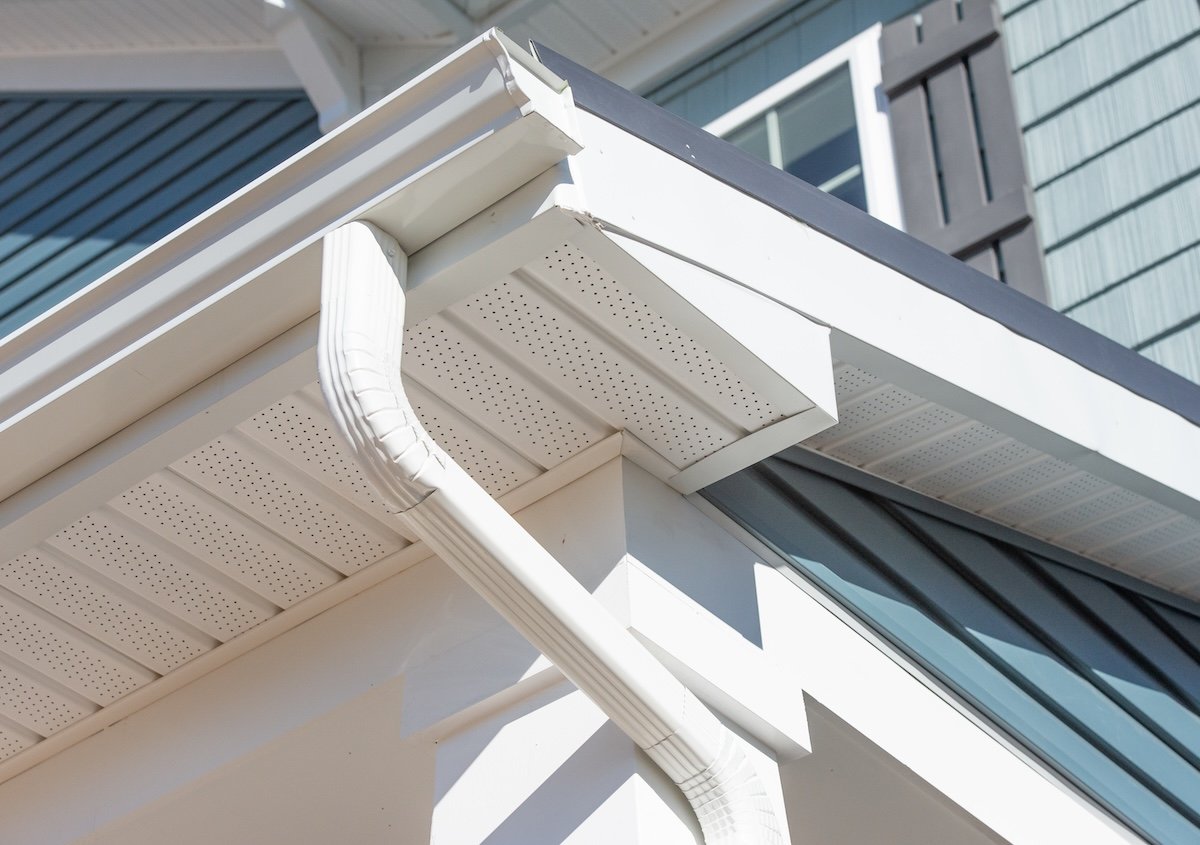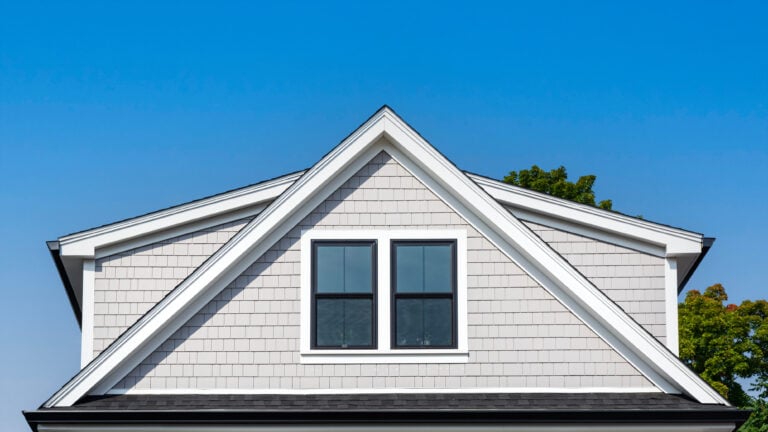Your roof works hard to protect your home from the elements, but it needs proper ventilation to do its job effectively. Soffit vents play a crucial role in this system, yet many homeowners don’t fully understand their importance. These small but mighty components help maintain your roof’s health and your home’s comfort year-round.
Proper roof ventilation can prevent costly damage, improve energy efficiency, and extend your roof’s lifespan. Without adequate soffit venting, you could face problems like ice dams, mold growth, and premature shingle deterioration. This guide will help you understand why soffit vents matter and how to install them correctly.
Here’s what we’ll cover:
- What soffit vents are and how they work
- Step-by-step installation tips
- Key benefits of proper soffit ventilation
🔎 What Are Soffit Vents and How Do They Work?
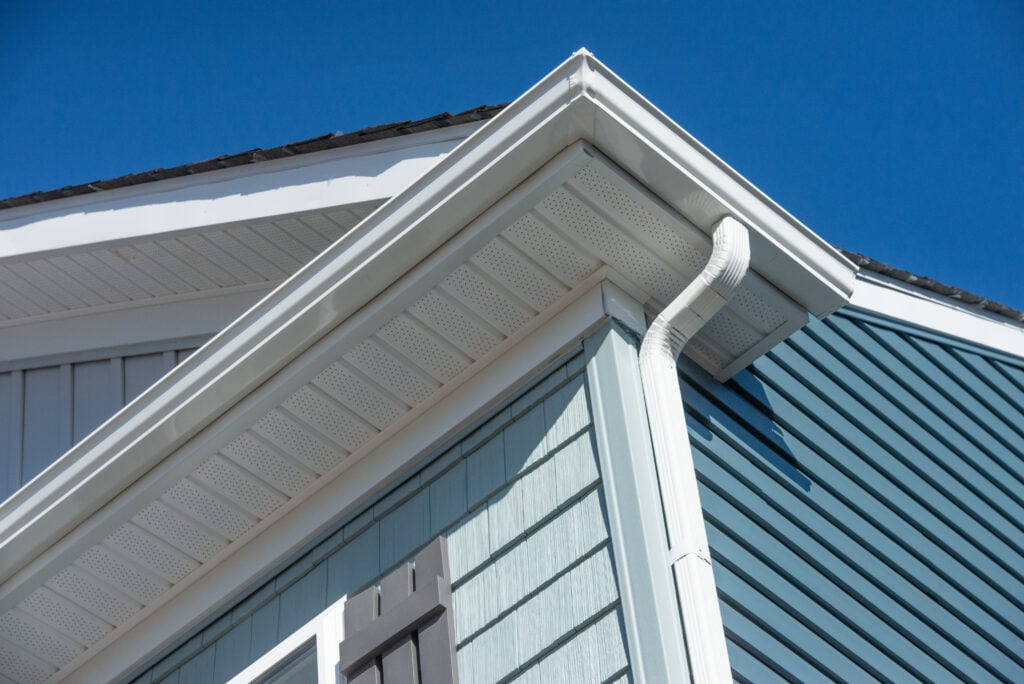
Soffit vents are intake vents installed under the eaves of your roof. They work as part of your home’s ventilation system by allowing fresh air to enter your attic space. This creates a continuous airflow pattern when combined with exhaust vents at the roof’s peak.
The science behind soffit vents is straightforward. Cool air enters through the soffit vents at the bottom of your roof, travels up through the attic space, and exits through ridge vents or other exhaust vents at the top. This natural convection process keeps air moving and prevents moisture buildup.
Types of Soffit Vents
You’ll find several types of soffit vents available:
Continuous soffit vents run along the entire length of your soffit, providing maximum airflow. These are often the most effective option for proper ventilation.
Individual soffit vents are smaller units installed at regular intervals. They’re easier to install but may not provide as much airflow as continuous vents.
Plug-in soffit vents fit into pre-cut holes in your soffit. These work well for retrofit installations where you’re adding ventilation to an existing roof.
💡 5 Essential Tips for Installing Soffit Vents
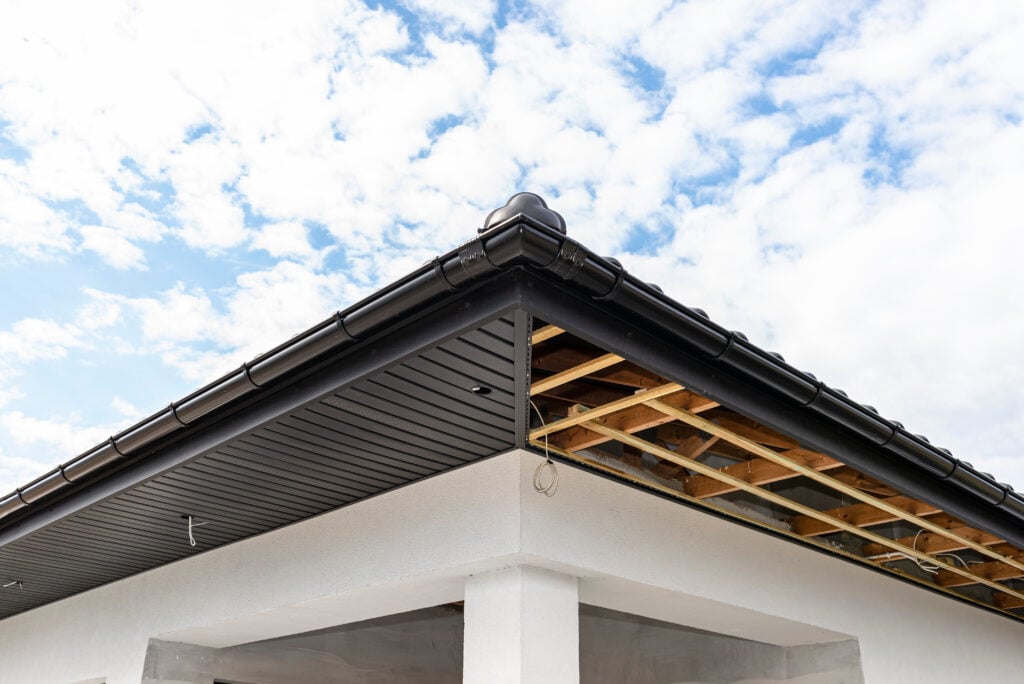
Installing soffit vents requires careful planning and attention to detail. Follow these tips to ensure your installation provides effective ventilation for years to come.
1. Calculate Proper Ventilation Requirements
Proper ventilation is key to maintaining the health of your attic and the overall efficiency of your home. Before installing any vents, take the time to calculate how much ventilation your attic requires. The general rule of thumb is one square foot of ventilation for every 150 square feet of attic space. This ensures adequate airflow to prevent issues like excessive heat buildup in the summer or moisture accumulation in the winter.
To achieve balanced ventilation, split this total evenly between intake (soffit) vents and exhaust (ridge) vents. This balance allows fresh air to enter through the soffit vents and stale, warm air to exit through the ridge vents, creating a continuous flow. For example, if your attic is 1,500 square feet, you’ll need 10 square feet of total ventilation: 5 square feet for intake vents and 5 square feet for exhaust vents. Be precise with your calculations, as incorrect ventilation can lead to problems like mold growth, warped roofing materials, or reduced energy efficiency.
If you’re unsure about your attic’s needs, consider consulting a professional to help you determine the best ventilation strategy for your home.
2. Choose the Right Location
The placement of your soffit vents is just as important as the amount of ventilation. Proper positioning ensures your attic gets the airflow it needs to function efficiently. Soffit vents should be installed in the lowest part of your roof’s overhang. This location allows them to draw in the coolest, freshest air from outside, which is then pushed upward through your attic and out through the exhaust vents.
To maximize efficiency, avoid installing soffit vents too close to exhaust vents. When they are too close, it creates short-circuiting, where the incoming air exits the attic space prematurely without circulating properly. This defeats the purpose of ventilation and can leave stagnant areas in your attic.
Before installation, ensure there’s a clear pathway from the soffit vents into the attic space. Blockages from insulation, wood, or debris can prevent airflow, so it’s important to check for and clear any obstructions. Proper placement and preparation will make a big difference in the effectiveness of your ventilation system.
3. Use Proper Tools and Materials
Having the right tools and materials on hand is essential for a smooth soffit vent installation. Before you begin, gather everything you’ll need to avoid interruptions during the process. Essential tools include a drill with a hole saw attachment for cutting openings, a jigsaw for more precise cuts, and a measuring tape and pencil for marking vent locations. Safety should also be a priority, so make sure you have gloves and eye protection to shield yourself from debris.
When selecting soffit vents, choose high-quality materials that match your home’s style and the existing soffit material. Aluminum and vinyl vents are popular choices due to their durability, weather resistance, and low maintenance requirements. Choosing vents that complement your home’s design ensures both functionality and aesthetic appeal.
Additionally, make sure you have screws or nails that are compatible with your soffit material, whether it’s wood, aluminum, or vinyl. Using the correct materials will ensure your vents are securely attached and built to last.
4. Create Clean, Precise Openings
Accuracy is key when cutting openings for soffit vents. Start by carefully marking the locations where the vents will be installed. Many vent kits come with a template for accurate placement; if yours doesn’t, you can create your own by tracing around the vent on a piece of paper. Measure twice to double-check your markings before making any cuts—this will help you avoid costly mistakes.
When cutting the openings, work slowly and carefully to prevent damaging the surrounding soffit material. A drill with a hole saw or a jigsaw will help you create smooth, precise openings. Take your time to clean up any rough edges or splinters after cutting, as this will ensure a professional appearance and a proper fit for the vent. Clean, well-prepared openings are crucial for both the functionality and the look of your soffit vents.
5. Secure Vents Properly
Once the openings are ready, it’s time to secure the soffit vents. Follow the manufacturer’s instructions closely for the best results. Most vents are designed to be attached with screws or nails around their perimeter. Ensure the vents sit flush against the soffit surface to create a tight seal and maintain a neat, professional appearance.
For added protection, consider using a small bead of caulk around the edges of the vents, as recommended by some manufacturers. This helps seal any tiny gaps, prevents air leaks, and serves as a barrier against insects or small animals that might try to enter your attic.
After securing the vents, inspect each one to ensure it’s properly installed and aligned. A well-installed vent will not only improve airflow but also enhance the overall look of your soffits. Taking the time to install the vents correctly will pay off in the long run, ensuring your attic ventilation system functions effectively and reliably.
⭐️ Benefits of Proper Soffit Ventilation
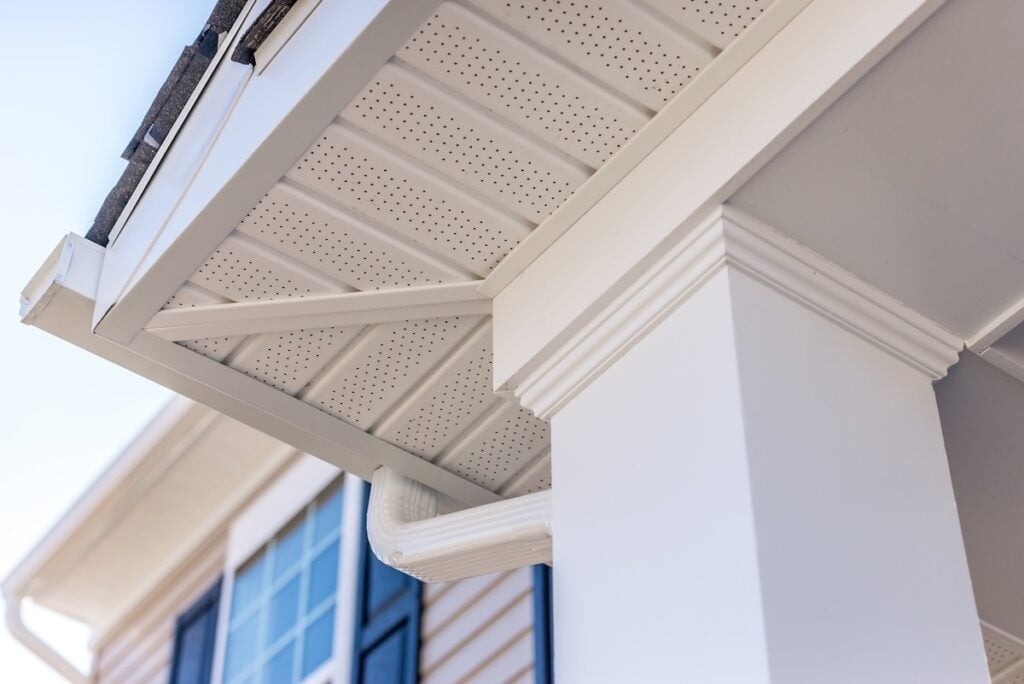
Installing adequate soffit vents brings multiple advantages to your home. These benefits extend beyond just roof health to impact your comfort and energy bills.
Temperature Control
Soffit vents help regulate attic temperatures throughout the year. During summer, they prevent your attic from becoming an oven that makes your air conditioning work harder. Hot attics can reach temperatures over 150°F, which forces your cooling system to work overtime.
In winter, proper ventilation prevents warm air from getting trapped in your attic. This helps maintain consistent temperatures and reduces the risk of ice dam formation on your roof edges.
Moisture Prevention
Moisture is one of the biggest threats to your roof and home structure. Soffit vents help remove humid air before it can cause problems. Without proper ventilation, moisture can lead to:
- Mold and mildew growth
- Wood rot in roof decking and framing
- Insulation damage that reduces energy efficiency
- Paint peeling and wallpaper damage
Energy Efficiency
A well-ventilated attic reduces the load on your heating and cooling systems. When your attic temperature stays closer to outdoor temperatures, your HVAC system doesn’t have to work as hard to maintain comfortable indoor conditions.
This improved efficiency can lead to noticeable savings on your energy bills. Many homeowners see a reduction in cooling costs during hot summer months after installing proper soffit ventilation.
Extended Roof Life
Proper ventilation helps your roofing materials last longer. Excessive heat buildup can cause shingles to deteriorate prematurely, leading to cracking, curling, and granule loss. Soffit vents help prevent these issues by maintaining more moderate attic temperatures.
👨🔧 Trust Palladium Roofing for Your Ventilation Needs
At Palladium Roofing, we take pride in providing expert solutions tailored to your home’s unique needs. With years of experience, a commitment to quality materials, and proven techniques, our team ensures your soffit ventilation system is installed to perform efficiently and protect your home for the long term.
When it comes to safeguarding your roof, enhancing energy efficiency, and improving overall comfort, you can trust Palladium Roofing to deliver reliable results. Ready to upgrade your ventilation system? Contact us today for a free assessment and let us help you protect your home with confidence!


